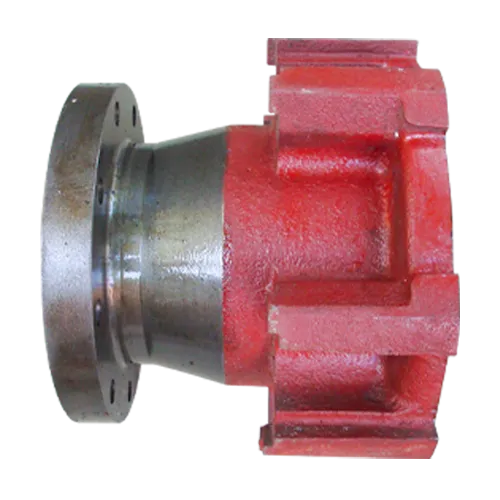Mobile:+86-311-808-126-83
Email:info@ydcastings.com
Exploring the Benefits of T3 Exhaust Housings for Enhanced Turbo Performance
Understanding T3 Exhaust Housing A Comprehensive Overview
The T3 exhaust housing is an essential component in the realm of turbocharging technology, where it serves a critical role in enhancing engine performance. To grasp its significance, let’s explore what an exhaust housing is, how the T3 designation came into being, and its implications for performance tuning and automotive engineering.
What is Exhaust Housing?
Exhaust housing refers to the part of a turbocharger where the exhaust gases from the engine enter, spinning the turbine inside. This spinning action is what enables the turbocharger to force more air into the engine's intake, which ultimately enhances engine power and efficiency. The design of the exhaust housing significantly affects the turbo's performance characteristics, including boost response, maximum boost pressure, and overall efficiency.
The T3 Designation
The term T3 is a classification that originates from the turbine housing design and its size. The T3 turbocharger is popular in the aftermarket tuning world due to its balance between size and performance. Compared to other designs, T3 housings are typically more compact, making them suitable for a wider range of applications, from street cars to race vehicles.
The T3 exhaust housing accommodates smaller turbines than its T4 counterpart, allowing for quicker spool times. This means that the turbocharger can build boost pressure more rapidly, providing increased power at lower RPMs. This characteristic makes T3 exhaust housings particularly appealing for applications where quick throttle response is critical, such as in drift cars and autocross vehicles.
Design Features of T3 Exhaust Housing
The T3 exhaust housing is characterized by its versatile construction materials, which can include cast iron or stainless steel. Each material has its advantages cast iron is robust and retains heat well, while stainless steel is lighter and less prone to corrosion. This choice of material impacts overall turbine efficiency and heat management.
t3 exhaust housing

Additionally, T3 exhaust housings come in various configurations, including different A/R (Area Ratio) sizes. The A/R ratio refers to the relationship between the cross-sectional area of the turbine inlet and the diameter of the turbine wheel. A lower A/R number generally means quicker spool times and a faster response but may limit top-end power. Conversely, a higher A/R could produce more power at higher RPMs but may come at the cost of delayed response. Therefore, tuners must carefully select the appropriate A/R to suit their specific usage needs.
Performance Implications
One of the main reasons automotive enthusiasts gravitate toward T3 exhaust housings is their potential for performance tuning. Since they allow for the adjustment of various parameters—such as boost pressure and spool time—they offer tuners the ability to customize their setups based on the type of driving they favor.
For example, in applications where quick bursts of acceleration are necessary, such as during a track day, a T3 setup might prioritize a lower A/R ratio. This ensures that the turbocharger builds boost quickly, allowing the driver to attain performance goals more efficiently. Conversely, for drag racing, where sustained high-speed runs are the focus, a higher A/R might be selected to maximize top-end power.
Common Applications
T3 exhaust housings are widely used in various performance applications. They find a place in both domestic and import car scenes, often featured in builds ranging from boosted street cars to high-horsepower race engines. Notably, many popular turbo kits designed for various vehicle models leverage the T3 housing for its blend of reliability and performance. Manufacturers like Garrett, Holset, and Precision Turbo offer an assortment of T3 options to cater to diverse needs.
Conclusion
In conclusion, the T3 exhaust housing serves as a pivotal component in the turbocharging landscape, empowering automotive enthusiasts to squeeze out optimal performance from their engines. With its robust design and flexibility in tuning, the T3 housing has secured its status as a favorite among tuners and racers alike. Understanding the nuances of T3 exhaust housings—and how they can be tailored to suit a particular application—is vital for anyone looking to unlock the full potential of their turbocharged setup. As technology continues to evolve, the impact of the T3 exhaust housing on engine performance remains a focal point in the pursuit of automotive excellence.
-
Why Should You Invest in Superior Pump Castings for Your Equipment?NewsJun.09,2025
-
Unlock Performance Potential with Stainless Impellers and Aluminum End CapsNewsJun.09,2025
-
Revolutionize Your Machinery with Superior Cast Iron and Aluminum ComponentsNewsJun.09,2025
-
Revolutionize Fluid Dynamics with Premium Pump ComponentsNewsJun.09,2025
-
Optimizing Industrial Systems with Essential Valve ComponentsNewsJun.09,2025
-
Elevate Grid Efficiency with High-Precision Power CastingsNewsJun.09,2025











